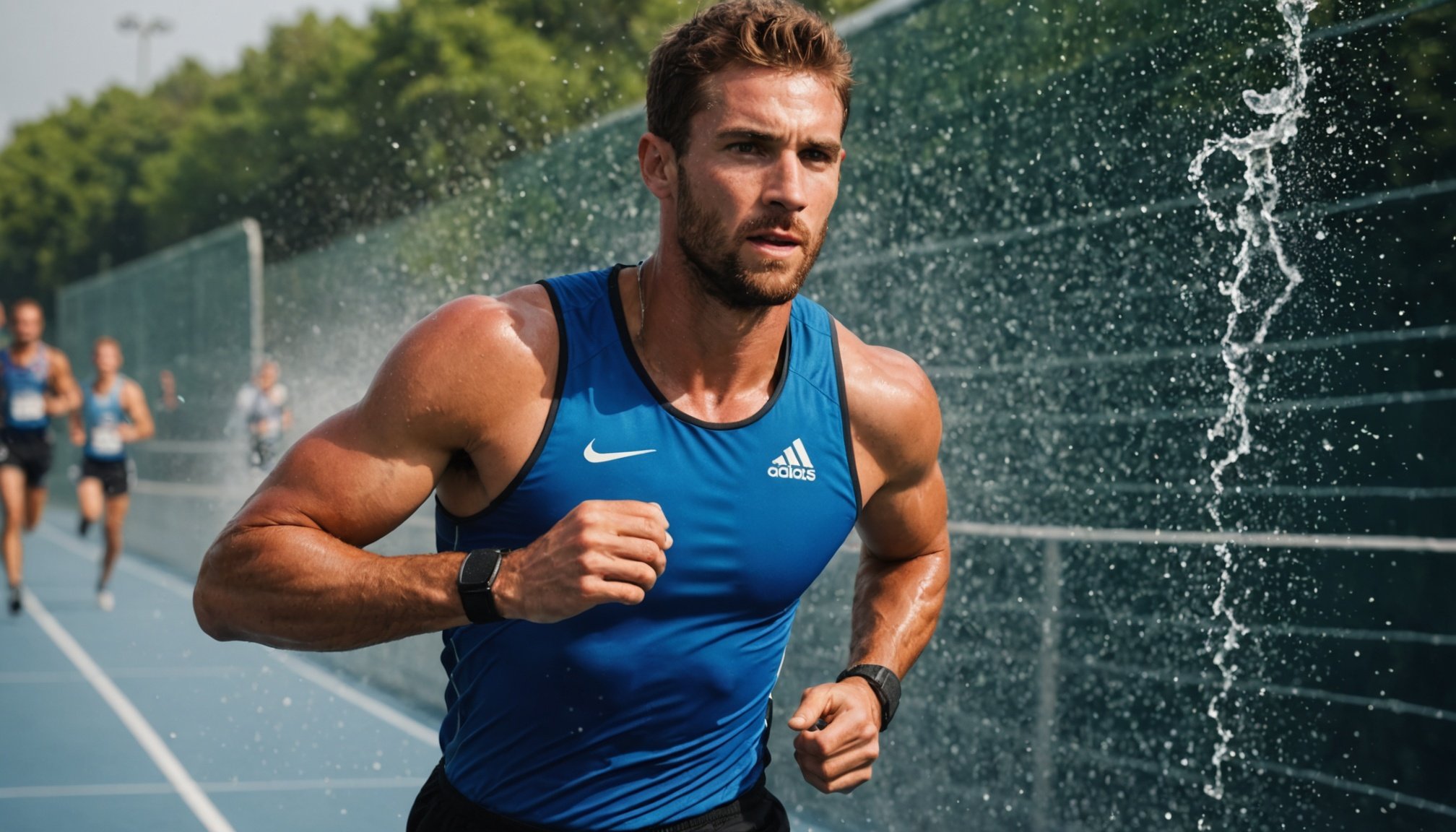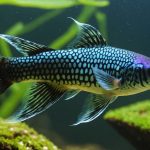Ultimate Guide to Acclimatizing Athletes for Success in High Humidity Conditions
Understanding Heat Acclimation: The Key to Performance in Hot Humid Conditions
When it comes to athletic performance, especially in sports like football, running, and other outdoor activities, understanding and implementing heat acclimation strategies is crucial. Heat acclimation, or the process of the body adapting to hot and humid environmental conditions, is not just a preventive measure against heat-related illnesses but also a performance enhancer.
Heat acclimation induces several physiological adaptations that improve thermoregulation, reduce physiological strain, and enhance overall performance. For instance, acclimatization increases plasma volume, which helps in better blood flow and heat dissipation. It also enhances sweat rate and efficiency, allowing the body to cool down more effectively[1].
Also to read : Essential Strategies for Modifying Training Loads in Young Athletes to Avert Overuse Injuries
Preparing Athletes for Hot Weather: A Systematic Approach
Acclimatization protocols are systematic methods designed to help athletes adapt to hot and humid conditions. Here are some key strategies that coaches and athletes can follow:
Gradual Exposure
- Start with short sessions in hot weather and gradually increase the duration and intensity over several days.
- For example, in football, practices can begin with athletes wearing only helmets for the first two days, then add shoulder pads on the third and fourth days, and finally wear full pads from the fifth day onwards[4].
Monitoring Environmental Conditions
- Use the heat index to monitor the temperature and humidity levels.
- Cease activities when the heat index rises above 104 degrees Fahrenheit. This is a critical guideline recommended by the MHSAA’s Model Policy for Managing Heat & Humidity[4].
Hydration
- Emphasize hydration all day long, starting before practice, continuing during, and after practice.
- Recommend water and properly-formulated sports drinks. Avoid energy drinks, high-carbohydrate fruit juices, carbonated, and caffeinated beverages[4].
Practical Strategies for Heat Acclimatization
Here are some detailed strategies that can be integrated into training programs:
Additional reading : Mastering Dynamic Warm-Up Techniques for Youth Ice Hockey Teams: A Comprehensive Guide
Acclimatization Schedule
- Day 1-2: Light training in hot weather with minimal gear.
- Day 3-4: Increase intensity and add more gear (e.g., shoulder pads in football).
- Day 5 and beyond: Full gear and increased intensity.
- Week 2 and beyond: Continue to increase the duration and intensity of practices while monitoring heat index and athlete hydration[4].
Environmental Adjustments
- Time of Day: Schedule practices during cooler parts of the day, such as early morning or late evening.
- Location: Move practices to shaded or cooler locations if possible.
- Activity Modification: Adjust practice plans to include more rest periods and less strenuous activities during peak heat times[4].
Recognizing and Managing Heat Stress
Heat stress is a serious condition that can lead to heat exhaustion and heat stroke if not managed properly. Here are some key points to recognize and manage heat stress:
Early Signs of Heat Illness
- Fatigue: Unusual tiredness or weakness.
- Headache: Severe headache that does not go away.
- Nausea: Feeling queasy or vomiting.
- Dizziness: Feeling faint or dizzy.
- Rapid Heart Rate: Increased heart rate.
- Dry Skin: Lack of sweating in hot weather[4].
Immediate Response
- Cool Down: Move the athlete to a cooler location.
- Hydrate: Provide cool water or sports drinks.
- Rest: Ensure the athlete rests and avoids strenuous activities.
- Medical Attention: Seek immediate medical attention if symptoms persist or worsen[4].
Physiological Adaptations During Heat Acclimation
Heat acclimation leads to several physiological adaptations that are beneficial for athletes:
Increased Plasma Volume
- This adaptation helps in better blood flow and heat dissipation, reducing the risk of heat-related illnesses[1].
Enhanced Sweat Rate and Efficiency
- The body becomes more efficient at sweating, which is crucial for cooling down in hot conditions[1].
Reduced Core Temperature
- Acclimatization helps in maintaining a lower core temperature during exercise, reducing the risk of heat stress[1].
Improved Heart Rate Regulation
- The heart rate becomes more efficient, allowing for better performance in hot conditions without excessive strain[1].
Table: Comparing Heat Acclimatization Strategies
| Strategy | Description | Benefits | Implementation |
|---|---|---|---|
| Gradual Exposure | Gradually increase training intensity and duration in hot weather | Reduces risk of heat-related illnesses, improves performance | Start with light training and increase intensity over days[4] |
| Monitoring Heat Index | Use heat index to monitor temperature and humidity levels | Ensures safe training conditions, prevents heat stress | Cease activities when heat index exceeds 104°F[4] |
| Hydration | Emphasize hydration before, during, and after practice | Maintains body temperature, prevents dehydration | Recommend water and sports drinks, avoid energy drinks[4] |
| Environmental Adjustments | Adjust practice time and location to cooler conditions | Reduces heat stress, improves performance | Schedule practices in cooler parts of the day, move to shaded locations[4] |
| Acclimatization Schedule | Systematic increase in training intensity and gear over days | Ensures gradual adaptation, reduces risk of heat-related illnesses | Follow a structured acclimatization schedule[4] |
Real-World Examples and Anecdotes
MHSAA’s Model Policy
The Michigan High School Athletic Association (MHSAA) has a model policy for managing heat and humidity that has been adopted by many schools. This policy includes guidelines for monitoring the heat index and adjusting practice plans accordingly. For example, football practices are structured to gradually increase in intensity and gear over the first few days to ensure athletes are acclimatized to the hot weather[4].
California’s New Laws
California recently updated its guidelines for athletes participating in sports in the heat. These laws emphasize the importance of heat acclimatization and provide specific guidelines for schools to follow, including regular monitoring of the heat index and ensuring proper hydration for athletes[5].
Quotes from Experts
- “If we take precautions and plan as we should, heat illness is almost always preventable,” said John E. “Jack” Roberts, executive director of the MHSAA. “We encourage student-athletes to come to their first practice prepared for hot conditions. But coaches also are trained to assume not all student-athletes will be ready, and to be vigilant in making sure all participants are hydrating properly.”[4]
- “Heat acclimatization is one of the most effective methods for reducing the risk of heat stress, especially as an achievable preventive measure for exertional heat stroke,” as noted in research on heat acclimatization strategies[2].: The Importance of Heat Acclimation in Sports
Heat acclimation is not just a safety measure but a performance enhancer for athletes. By understanding the physiological adaptations that occur during heat acclimation and implementing systematic acclimatization protocols, athletes can perform better in hot and humid conditions while minimizing the risk of heat-related illnesses.
In the words of Jack Roberts, “The first days of formal practices in hot weather should be more for heat acclimatization than the conditioning of athletes.” This approach ensures that athletes are well-prepared for the demands of their sport in any environmental condition, making them more resilient and performative on the field.
By following these guidelines, athletes can navigate the challenges of hot and humid conditions with confidence, ensuring a safe and successful sports season.
Overview of High Humidity and Its Effects on Athletes
High humidity is characterised by the presence of a substantial amount of water vapour in the air, which can be measured using relative humidity percentages. Relative humidity refers to the percentage of moisture in the air compared to the maximum amount the air can hold at a given temperature. When this percentage rises, it signifies high humidity levels, which can significantly impact athletes.
Athletes often experience impaired performance in high humidity conditions due to reduced efficiency in the body’s cooling mechanisms. Sweat evaporation is a crucial process for temperature regulation in athletes. However, in conditions of high humidity, sweat evaporates less efficiently, leading to increased body temperature and dehydration. This can result in fatigue, dizziness, and an overall decrease in performance, ultimately affecting the athlete’s capacity to perform at peak levels.
Acclimatization, or adjusting to the environmental conditions, becomes vital for athletes when dealing with high humidity. The process involves gradually exposing the athlete to such conditions, allowing the body to adapt by optimizing sweat response and heart rate, thus enhancing performance and safety during competitions. Effective acclimatization strategies can be critical to performance and the well-being of athletes competing in such challenging conditions.
Acclimatization Strategies for Athletes
Successfully navigating the challenges of acclimatization techniques involves a methodical approach, especially for athletes. One effective strategy is gradual exposure to high humidity environments. This means slowly increasing the time spent in these conditions, allowing the body to adjust without overwhelming the system. Such a strategy minimises risks and enhances performance readiness during competition.
The duration and timing of acclimatization within training cycles are critical. Ideally, athletes should plan to begin acclimatization two weeks before a major competition. This timeframe allows for optimal physiological adaptations, ensuring the athlete is primed for high-humidity conditions.
During this period, various training adaptations occur. These include:
- Increased plasma volume, which improves cardiovascular stability and performance.
- Enhanced sweat response, helping to regulate body temperature more efficiently.
- Improved skin blood flow, which aids in dissipating heat.
By leveraging these acclimatization techniques, athletes can significantly improve their performance levels. The result is a well-prepared athlete who is adept at managing the demands of high humidity, ultimately giving them a competitive edge. Remember, the goal is a seamless adaptation, achieved through systematic exposure and careful planning.
Hydration Strategies for High Humidity Conditions
In high humidity conditions, maintaining optimal hydration is crucial to support physical performance and overall well-being. Adequate fluid intake before, during, and after activities cannot be overemphasised. It is recommended to consume 500ml of water a few hours before engaging in activities, ensuring your body is hydrated beforehand. During activities, it is advisable to drink 150-250ml every 15-20 minutes to maintain hydration without overloading your system. Post-activity, the goal is to restore any lost fluids; typically, drink 1.5 litres of fluid for every kilogram of weight lost.
Electrolyte balance plays a pivotal role in any effective hydration plan. Electrolytes such as sodium, potassium, and magnesium are vital as they help regulate muscle and nerve function, and maintain the body’s acid-base balance. Integrating electrolyte-rich beverages can aid in replenishing these important ions.
Various tools and techniques can help monitor your hydration status effectively. Urine colour charts are an uncomplicated method; light yellow indicates proper hydration, whereas darker hues suggest dehydration. Digital hydration apps or sweat loss calculators can provide a more precise analysis, offering insights into individual fluid needs based on personal exercise habits and conditions.
Training Regimens in Humid Environments
Training in humid environments requires strategic adjustments to facilitate performance and safety. Athletes often need to adapt their training intensity and duration when facing high humidity levels. It’s crucial to reduce the intensity of workouts initially to prevent overheating. Gradually increasing the intensity over time allows the body to acclimate to the humid, demanding conditions.
Incorporating heat acclimation sessions can further enhance one’s ability to cope with humid climates. These sessions should initially be short and less intense, focusing on allowing the body to gradually get used to the heat. Over the course of several days to weeks, athletes can slowly increase the duration and intensity, thereby improving their heat tolerance and conditioning in humidity.
To maintain performance, athletes should make workout modifications such as increasing hydration frequency and ensuring adequate fluid intake before, during, and after workouts. This helps prevent dehydration and maintain endurance. Additionally, wearing breathable, moisture-wicking clothing can assist in regulating body temperature during training. Understanding these training tips allows athletes to adjust their routines effectively, maintaining their performance levels while training in hot and humid conditions.
Nutritional Considerations for Athletes
In humid environments, athletes require unique nutritional strategies to maintain performance and recovery. Adjusting your diet for humid conditions involves prioritising hydration and electrolytes. Implementing targeted nutrition tips can severely impact your ability to cope with heat, maintaining endurance and stamina during strenuous activities.
Carbohydrates play a crucial role in providing the necessary energy for athletes performing under heat exposure. As a quick source of energy, they should be consumed regularly throughout the day. Proteins, on the other hand, aid in repairing muscle tissues and facilitating recovery, making them indispensable for post-exercise meals.
When considering meal planning, timing and composition are key parameters. Pre-exercise meals should focus on easily digestible carbohydrates to ensure energy is readily available. Post-activity, a mix of proteins and carbohydrates can significantly enhance recovery and muscle replenishment. Aim to consume this within a 30-minute window after activity.
Humid conditions demand specific attention to replenishing fluids lost during exercise. Incorporate electrolyte-rich foods or drinks to counteract sweat loss, helping you remain active and sharp. Tailoring your nutrition to these needs helps athletes perform optimally, even in challenging weather conditions.
Health Risks Associated with High Humidity
High humidity can pose significant health risks, especially for athletes engaging in strenuous activities. Recognising the signs and symptoms of heat-related illnesses is crucial for effective management. Heat exhaustion can manifest with symptoms such as heavy sweating, weakness, and “dizziness”, potentially leading to more severe heatstroke if not addressed swiftly. Heatstroke symptoms include high body temperature, rapid pulse, and potential unconsciousness, requiring immediate medical attention.
Prevention remains the most effective strategy. Athletes are encouraged to:
- Monitor humidity and temperature levels to avoid exercising during peak risk periods.
- Stay hydrated by drinking plenty of water before, during, and after exercise.
- Opt for lightweight, light-coloured, and loose-fitting clothing that improves air circulation.
- Acclimate gradually to hot and humid conditions to allow the body to adjust.
- Incorporate frequent rest breaks in the shade or a cool environment to reduce body heat.
By understanding and implementing these prevention strategies, individuals can mitigate the risks associated with high humidity. Awareness and proactive measures ensure that athletes maintain safety and well-being, even in challenging weather conditions.
Case Studies and Expert Insights
Understanding successful acclimatization strategies can be transformative. Case studies offer valuable insights into effectively managing the challenges posed by environmental conditions. In a notable example, a team of athletes employed guided acclimatization processes, resulting in significantly improved performance metrics across the board.
To better navigate the intricacies of humidity, expert opinions play a crucial role. Sports scientists, through meticulous research, have developed comprehensive strategies to overcome humidity hurdles. They emphasize gradual adaptation and hydration as cornerstones of these strategies. Coaches complement this with practical experiences, designing tailored training regimens to build athletes’ resilience.
Real-world experiences shared by athletes serve as authentic testimonials. Many describe initial struggles during acclimatization, yet highlight that patience and methodical adjustment can yield astonishing results. One athlete famously stated, “The right acclimatization strategy was the key to unlocking my potential.”
To summarize, these case studies and insights not only provide expert opinions but also practical approaches. They underscore the importance of planned acclimatization, spotlighting the symbiotic relationship between theory and practice. For those athletes needing to adapt to new environments, these examples offer a roadmap towards success.
Visual Aids and Resources
In the pursuit of understanding hydration needs in varying conditions, visual tools are indispensable. Charts and graphs can effectively illustrate how humidity impacts hydration requirements. For instance, a chart might depict how daily water intake should increase as humidity levels rise, providing clear guidance at a glance.
Infographics are also a beneficial resource, particularly those that detail acclimatization timelines and strategies. Such resources showcase the process of adjusting to new climate conditions, helping individuals plan their hydration more effectively. A simple infographic might show the gradual increase in exercise duration over several days or the importance of rest intervals, making complex information accessible and easy to follow.
Beyond these visual aids, exploring additional resources for further learning can significantly enhance understanding. Recommended materials typically include comprehensive guides or interactive support tools that offer personalized hydration strategies. These resources can simulate various scenarios, helping users adapt their hydration practices according to their specific environments or activities.
Together, these visual and interactive resources equip individuals with the necessary knowledge to make informed decisions, supporting optimal hydration and acclimatization in diverse conditions.











